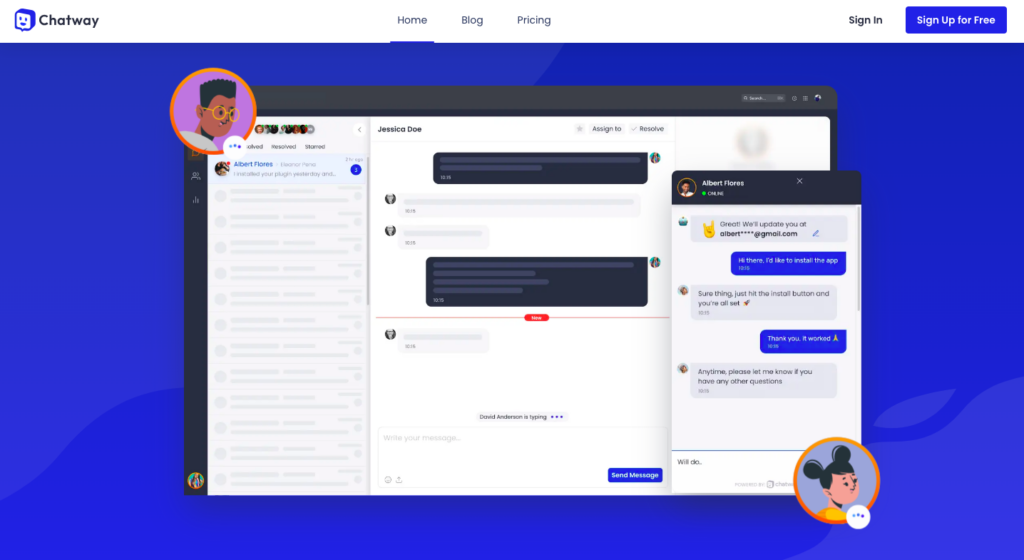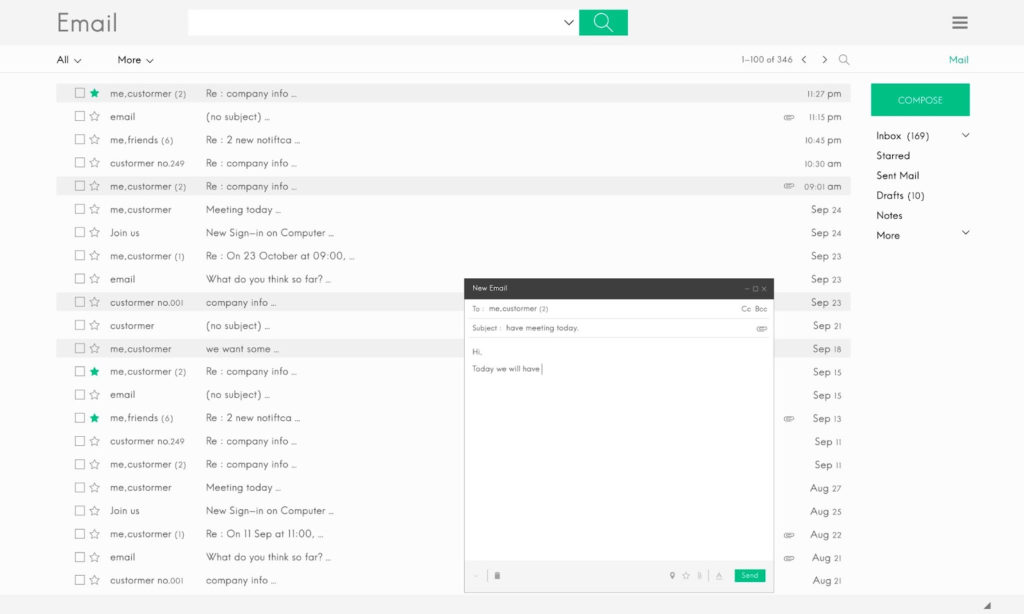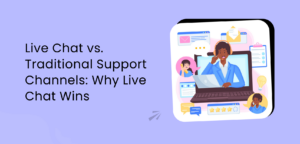
Damilola Oyetunji
Content Writer at Chatway.
Quickly respond to customer and visitor inquiries via live chat
Personalize the chat widget to match your business's style and branding
Stay updated on all incoming messages with email and push notifications
Improve the way your team works with chat assignments and private notes
Provide support on the go with Chatway's mobile apps for iOS and Android devices
Categorize and label conversations using specific criteria for personalized support
Interact with visitors in their preferred language, supporting 20+ languages
Use Chatway live chat on multiple platforms such as Shopify, Wix, Duda etc
Get insights into your support activities to better understand customer interactions
Centralize chats from Messenger and email into a single dashboard
All,Customer Service,Live Chat - 7 Mins READ
Content Marketer

Excellent communication is an important aspect of any business’ growth and marketing strategy. A lack of proper communication can negatively impact a brand’s reputation and perception. In fact, 80% of customers in the United States would pay more for a product or service if it meant getting a better customer experience.
As a website owner, this should be a wake-up call for you, if you haven’t already invested in customer engagement. Providing excellent customer support is essential to keeping your customers happy and retaining them.
However, choosing the right communication channel is crucial to ensure timely and efficient support delivery.
There are a lot of communication channels available in our technologically-driven world today, but two of the most popular communication channels for businesses are live chat and email support. You might wonder, which option is better? Live chat for website or email support?
In this article, we’ll compare and contrast the benefits and drawbacks of both communication channels to help you decide which one is best for your website’s success.
Live chat support is a real-time communication channel that enables customers to interact with a support agent via a chat window on your website. Adding live chat on your website allows you to offer instant responses to customer queries and is known to improve customer satisfaction. This is especially true for the e-commerce and retail industries which have the fastest live chat usage so far.

While live chat support software can be beneficial for customer communication, there are also several drawbacks to consider. Some of these include:
Email support is an asynchronous communication channel that allows customers to send queries to a support team via email. It’s a popular support channel because it’s easy to use and accessible to customers. However, it has its own limitations.

Image source: freepik
Now that we’ve looked at the benefits and drawbacks of both live chat support and email support, let’s compare them based on several factors:
Live chat support offers an instant response, while email support takes longer to receive a response. This is evident by research by Hubspot, which shows that about 66% of customers expect businesses to provide an instant response to their queries.
However, some live chat support agents may take longer to respond during peak hours, which could lead to longer wait times. Email support response times can vary, but they are generally slower than live chat support.
Live chat support enables agents to handle multiple conversations simultaneously, which makes it more efficient than email support. On the other hand, email support agents can take their time to provide detailed responses to queries, which can lead to accurate solutions.
Live chat support offers instant responses and personalization, which makes customers feel heard and valued. Email support lacks the personal touch but enables customers to provide detailed information about their query. Both support channels can result in high customer satisfaction, depending on how well they are executed.
Live chat support offers personalization by addressing customers by name and using the context of the conversation to provide relevant solutions. Email support requires agents to make an extra effort to personalize their responses, which can result in a less personal experience for customers.
The answer to this question depends on your website’s needs and your support team’s capabilities. To help you make the decision, let’s look at some statistics:
If you have a small support team and want to offer instant support, live chat support may be the best option for you. There are different live chat techniques to keep in mind so you can boost your customer satisfaction rate and indirectly grow your business – satisfied customers make great word-of-mouth marketers. You can also take advantage of the fast adoption of technology to offer customers a more personalized way of interacting with your business by trying out the free plans of live chat software to determine what suits you best.
On the other hand, if you have a larger support team and want to provide detailed solutions, email support may be a better option. You can also include live chat if your budget supports the provision for both of them. Studies show that the satisfaction rate for live chat is 85%, compared to 82% for email and 91% for phone support. This shows that you can get the best of both worlds and increase your conversion rates.
Live chat support and email support are both popular communication channels for customer support. Live chat support offers instant responses and personalization, while email support provides detailed information and accessibility. It’s essential to choose the support channel that best suits your website’s needs and your support team’s capabilities.
It’s also crucial to consider factors such as response time, efficiency, customer satisfaction, and personalization when choosing a support channel. In the end, you may also want to consider offering both live chat support and email support to give your customers more options.

Content Writer at Chatway.

Content Writer at Chatway.

Content Writer at Chatway.